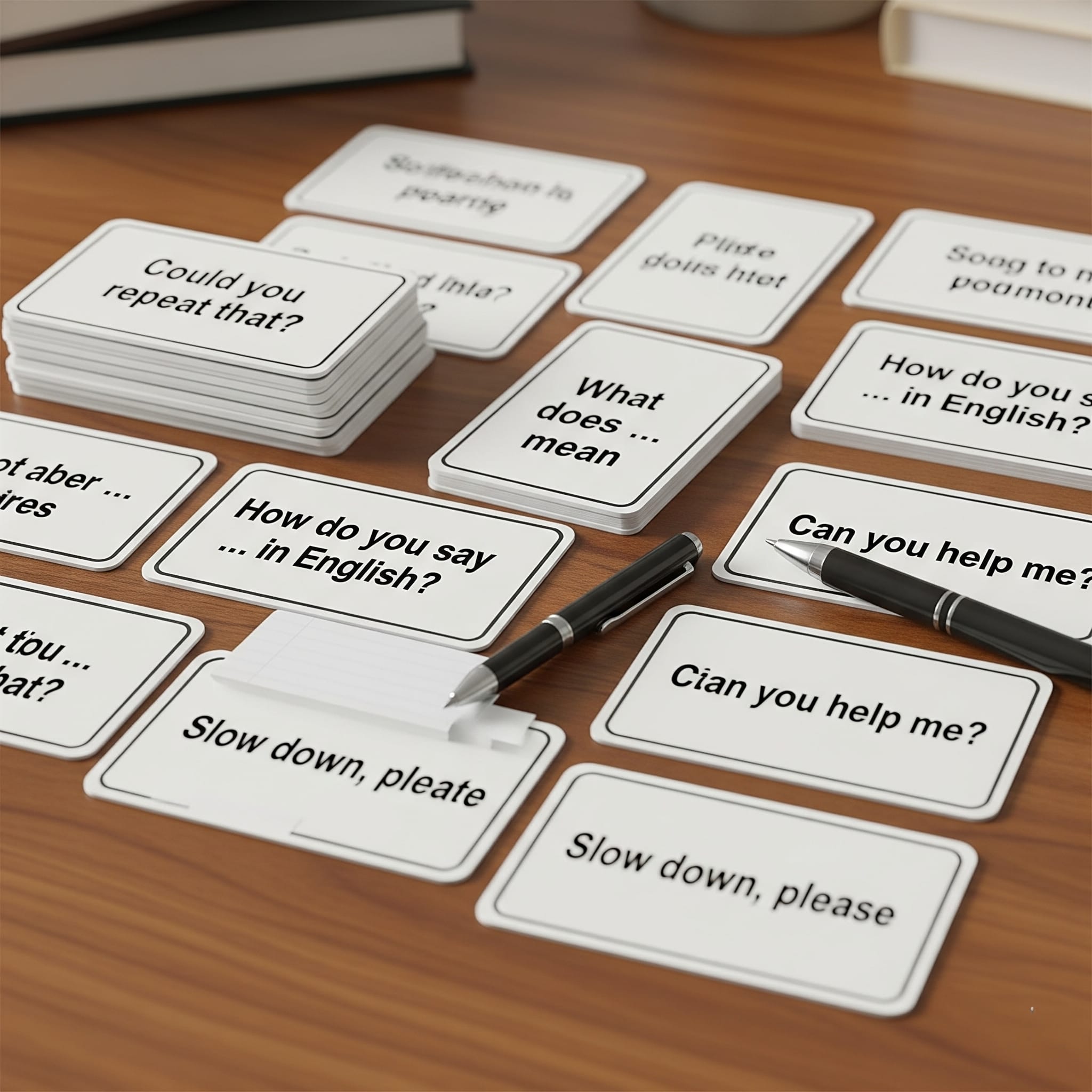How to Improve English Speaking at Home: 7 Fluency Tips for Beginners
Learn easy, proven methods to improve English speaking at home. Discover beginner-friendly fluency tips for beginners, Clapingo-style practice sections, FAQs, and useful tricks.

Introduction
Feeling uneasy about talking in English at home? You're not alone. But with the right tips, you can get better quickly. In this guide, you will learn how to improve English speaking at home. You'll find fluency tips for beginners, Clapingo-style practice sections, useful tricks, FAQs, and fun “Did you know?” facts. Let’s dive in.
Why Work on English Speaking at Home?
Home is safe and free. You can practice anytime.
You avoid pressure and judgment.
Over time, small steps make big gains.
1. Comfort Builds Confidence
One of the biggest advantages of learning English at home is comfort. You’re in your own space, surrounded by familiar things, which removes a lot of the pressure. Many learners freeze up when they’re in a classroom because they fear being judged by peers. At home, that fear disappears. You can make mistakes, laugh at yourself, and try again—without worrying about who’s listening.
This comfort is crucial when you want to improve English speaking. Fluency comes from practice, and practice only happens when you feel relaxed enough to speak. Beginners often need this safe space to build their first sentences out loud.
Clapingo mirrors this environment by offering friendly, one-on-one conversations with mentors. You get the same sense of safety, but with someone who gently guides you and helps you improve in real time.
2. Flexible Timings for Busy People
Time is one of the biggest hurdles for working professionals and students. Traveling to a coaching center takes effort, and sticking to rigid class timings is often impossible. That’s why learning at home is such a powerful option—you set your own schedule. Whether you want to practice at 6 a.m. before work, or late at night before bed, it’s all possible.
This flexibility ensures you can build a routine that actually works for your life. Even 15 minutes of speaking practice daily makes a difference. Small, consistent sessions add up faster than long, irregular ones.
Clapingo supports this idea by allowing learners to book short sessions at times that suit them. Many busy professionals find this far easier than adjusting to a coaching center’s timetable. Your time is valuable, and learning at home respects that.
3. Affordable Alternative to Coaching Centers
Let’s be honest—traditional coaching centers can be expensive. They often include charges for infrastructure, materials, and group classes where you barely get speaking time. Learning English at home is cost-effective. You can use free resources online, like YouTube videos, podcasts, and practice worksheets, while focusing more on speaking.
Investing in your English doesn’t have to break the bank. When you learn from home, you control the tools you pay for. You can choose affordable subscriptions, apps, or session-based programs.
Clapingo, for example, allows you to pay for the sessions you need. There are no hidden costs for classrooms or commuting. You’re essentially investing only in your practice time, making it a much more affordable way to improve English speaking while still getting quality guidance.
4. Access to Global Content
The internet has made the world smaller, and when you’re learning English at home, you have access to global content right at your fingertips. You can listen to British podcasts, watch American talk shows, or join global discussion forums. This exposure helps you hear different accents, vocabulary, and cultural contexts.
The key is to not just consume this content but also practice speaking about it. Watch a 10-minute video, pause, and then explain what you understood out loud. This improves fluency and comprehension together.
Clapingo adds another layer to this exposure. Tutors often bring discussion topics based on current events, global trends, or workplace situations. This way, your practice goes beyond theory—you learn how to apply what you hear online to real conversations.
5. Personalized Pace
Everyone learns differently. Some people pick up grammar fast but struggle with pronunciation. Others have a large vocabulary but can’t form smooth sentences. The beauty of learning at home is that you can go at your own pace. If you want to spend a week mastering 10 useful phrases, that’s your choice. If you want to speed up, you can double your practice.
This personal pace is essential for fluency tips for beginners. Rushing often leads to confusion, while taking it step by step builds confidence.
Clapingo works in the same way. Tutors adapt their lessons to your pace. If you’re moving quickly, they challenge you with advanced conversations. If you need more time, they slow down and practice the basics until you’re ready. No pressure, no rush—just progress at your own rhythm.
6. Focused One-on-One Practice
One of the most frustrating parts of group classes is the lack of speaking time. You might sit in a classroom for an hour but only get to speak for five minutes. At home, you can flip this ratio. You’re in control of how much you talk.
The more you speak, the faster you improve. Even if you’re practicing with yourself—by recording your voice or reading aloud—you’re building the habit of using English actively.
Clapingo guarantees this one-on-one focus. Sessions are designed so that the learner does most of the talking. Tutors act as guides, encouraging you to express more and correcting only when necessary. This maximizes your practice time, which is exactly what you need to become fluent.
7. No Commute, More Practice
One of the simplest but strongest benefits of learning English at home is the time you save. Imagine the hours spent traveling to and from a coaching center each week. That’s time you could spend practicing instead.
This is especially important for working professionals, parents, and students with tight schedules. By cutting out the commute, you free up more opportunities to improve. Even using that saved time to practice for 10 minutes daily adds up to a big improvement over weeks.
Clapingo understands this lifestyle advantage. Many learners use their saved travel time for quick practice sessions. A 15-minute online session can replace a long, tiring commute and still give better results.
8. Builds Daily Consistency
Consistency is the secret to fluency. Practicing for 10 minutes every day is far better than studying for two hours once a week. At home, you can easily build this habit. Create a routine—morning self-talk, evening reading aloud, or recording your summary of the day before bed.
The key is to make English a natural part of your daily life. Over time, it stops feeling like a “subject” and starts feeling like a skill you actually own.
Clapingo’s short, flexible sessions help support this consistency. Many learners sign up for quick daily or weekly calls that keep them on track. It’s like having a friendly accountability partner who makes sure you don’t skip practice.
9. Freedom to Experiment with Topics
When you practice at home, you can talk about anything you like—your hobbies, your work, or even what you ate for lunch. Nobody stops you, and you don’t need to follow a rigid textbook. This freedom is powerful because it makes practice enjoyable.
The more you connect English to your real life, the easier it is to recall words and build sentences. Beginners especially benefit from practicing with familiar topics—it reduces hesitation and builds confidence.
Clapingo tutors often bring fresh conversation starters about daily life, workplace situations, or trending topics. This variety makes sure you never get bored while practicing.
10. Real-Life Simulation
Learning English at home gives you the chance to practice in real situations. For example, you can describe your kitchen items in English while cooking or explain a movie plot to a friend. This practical style of learning makes language skills stick faster.
These mini-simulations train your brain to think in English, which is one of the biggest steps toward fluency. Instead of memorizing grammar rules, you learn by doing.
Clapingo also uses this method. Tutors may ask you to describe your surroundings, talk about your day, or role-play a work meeting. These activities prepare you for real-life conversations, not just exams.
11. Reduces Anxiety
For many learners, the fear of speaking in front of others is the biggest barrier. At home, you don’t face this pressure. You can practice as many times as you want, redo mistakes, and take breaks whenever needed.
This reduces anxiety and builds self-confidence. Once you get comfortable speaking alone or with a tutor online, it becomes easier to speak in public too.
Clapingo’s private sessions mirror this comfort zone. You speak with a supportive tutor who encourages, not criticizes. Over time, this builds the confidence to speak up in professional and social settings.
12. Builds Independence and Self-Learning Skills
Finally, learning at home teaches you how to take charge of your progress. You decide what to study, how much to practice, and which tools to use. This independence is a valuable skill not just for English but for lifelong learning.
Independent learners usually improve faster because they stay curious and self-motivated. They don’t wait for someone else to set the pace.
Clapingo complements this independence by giving you gentle guidance while allowing you to stay in control. You’re not spoon-fed—you’re empowered to grow as a confident speaker.
Set Up a Simple, Effective Plan
1. Assess Your Current Level
Ask yourself:
Can I speak for a full minute without pausing?
Do people often ask you to repeat or slow down?
Can I understand simple movies or shows?
These questions help you know where to start.
2. Set Small, Realistic Goals
Break your targets into weekly habits, such as:
Week 1: Learn and say 5 new sentences out loud each day.
Week 2: Read one short article and speak its summary.
Week 3: Record and listen to your spoken version.
Small steps add up fast.
3. Choose Clear Resources
Use:
Easy YouTube videos or short podcasts.
Clapingo-like interview prompts (we’ll do those next).
Vocabulary apps or flashcards.
4. Create a Daily Speaking Habit
Even 10 minutes helps. Try:
2–3 sentences about your day.
Reading aloud and explaining a paragraph.
Repeating video dialogue to match accent and tone.

Clapingo-Style Practice
These “Clapingo sections” give short prompts and model answers for you to speak along with.
Practice Section A: Daily Routine
Prompt: "Tell me about your day in two or three sentences."
Model answer: “I wake up at 7 a.m. I eat breakfast and read the news. Then I start working on my tasks.”
Now pause. Repeat and record your own version.
Practice Section B: Describe a Simple Object
Prompt: "Describe your favorite book."
Model answer: “My favorite book is a mystery novel about a detective. It keeps me curious. I like the characters and the plot twist.”
Speak it out loud and then try your own version.
Practice Section C: Share an Opinion
Prompt: "Do you prefer tea or coffee? Why?"
Model answer: “I prefer tea because it feels calming. I like the taste of green tea. It helps me focus.”
Speak, record, then make your own reply.
Focus on Pronunciation and Fluency Foundations
Listen and Repeat
Pick a short clip (10–20 seconds). Listen carefully. Repeat, trying to match rhythm, stress, and tone.
Use Pronunciation Aids
Break tricky words into syllables.
Speak Slowly, Clearly
Talking slower helps you enunciate and think. Pause between phrases. Clarity builds confidence.
Get Feedback
If possible, share a recording with a friend or use a language app that gives feedback.
Build Vocabulary and Grammar in Context
Read and Speak
Read a short paragraph. Then speak it. Summarize it in your own words.
Use Flashcards for Phrases
Practice phrases like:
"Could you say that again, please?"
"I’m not sure I understand. Can you explain?"
"What do you think about…?"
These phrases boost fluency.
Try Grammar in Conversation
Use simple structures:
Past: “I went to the market yesterday.”
Present: “I work from home most days.”
Future: “I will practice English tonight.”

Steps You Can Take at Home to Achieve Fluency
1. Set Clear, Achievable Goals
Fluency doesn’t happen overnight. The first step is setting clear goals. Ask yourself: “What do I want to achieve in the next week, month, or three months?” For beginners, this could be simple: speak for one minute without pausing, learn five new phrases daily, or describe your surroundings in English.
Breaking your larger goal into smaller, achievable steps keeps motivation high and prevents frustration. Make a checklist and track progress daily. Even a small accomplishment—like reading a short paragraph aloud—is progress.
Clapingo mentors often start sessions by helping learners set weekly goals. This ensures your practice is targeted and measurable, which is key for steady improvement.
2. Practice Speaking Daily
Consistency is essential. Daily speaking—even for just 10–15 minutes—creates muscle memory in your brain. Use self-talk to describe what you’re doing, narrate your day, or summarize a video or article. Record yourself and listen back to notice pronunciation, sentence flow, and pauses.
Beginners often worry about mistakes, but fluency develops through trial and error. The more you speak, the more confident and natural you become.
Clapingo sessions provide structured speaking time every day or week, giving learners the confidence to practice regularly with a mentor’s guidance.

3. Listen and Shadow Native Speakers
Fluency comes from hearing correct sentence structures, pronunciation, and rhythm. Listen to short videos, podcasts, or dialogues. Then, “shadow” the speaker by repeating exactly what they say, mimicking tone, pace, and stress.
This technique improves your accent, speed, and natural intonation. It also helps you internalize phrases so you can recall them effortlessly during real conversations.
Clapingo often encourages shadowing exercises during sessions, especially for beginners. Tutors can correct subtle pronunciation mistakes and give tips for smoother speaking.
4. Read Aloud Every Day
Reading aloud strengthens your ability to pronounce words correctly and form sentences smoothly. Start with short paragraphs or news articles, and gradually move to longer texts. Focus on clarity and pace, not speed.
After reading, try summarizing the paragraph in your own words. This combines vocabulary, sentence structure, and speaking practice—all in one step.
Clapingo tutors can guide you on effective reading techniques and even suggest passages suited to your level, ensuring your practice is productive.
5. Build a Core Vocabulary
Fluency requires a comfortable vocabulary base. Learn words and phrases that are useful in daily conversation. Group them by topic: greetings, work, hobbies, or emotions. Create flashcards or use apps to review frequently.
Practice using these words in sentences and conversations at home. The goal is to recall them naturally, not memorize by rote.
Clapingo mentors often provide learners with topic-based phrases and encourage applying them in live conversations, helping vocabulary stick faster.
6. Practice Thinking in English
A common fluency barrier is translating from your native language. Instead, try thinking in English while doing daily tasks: planning your day, describing what you see, or making grocery lists in English.
This trains your brain to produce English sentences spontaneously. Beginners often start with simple sentences and gradually expand complexity.
Clapingo sessions often incorporate exercises that encourage learners to respond in English immediately, which reinforces thinking directly in the language.

Avoid Mirror Practice - Switch to Recording Yourself
7. Record, Listen, and Improve
Recording yourself is one of the most effective self-practice techniques. Speak on a topic for one or two minutes, then listen back. Notice pauses, pronunciation errors, and sentence flow. Repeat and improve.
This feedback loop allows you to track progress and notice patterns in your speech. Over time, you’ll speak more confidently and naturally.
Clapingo encourages learners to record answers to prompts between sessions. Tutors then review and give constructive feedback for maximum improvement.
8. Use Everyday Objects for Practice
Turn your environment into a speaking lab. Describe objects around your house, narrate your cooking steps, or explain your workout routine. This makes practice contextual and meaningful.
Practical, real-life usage of English helps your brain connect words with actions, improving fluency faster than rote exercises.
Clapingo mentors sometimes assign “real-life description exercises,” where learners talk about their environment during the session. It’s a fun and practical way to boost confidence.
9. Engage in Simulated Conversations
Create dialogues based on real-life situations: ordering food, introducing yourself at work, or explaining a problem. Practice both roles, or use a friend or family member to act as your conversation partner.
Role-playing improves spontaneous thinking, sentence construction, and fluency under pressure.
Clapingo specializes in these simulated conversations, especially for workplace and social situations, providing instant feedback to help you speak naturally.
10. Review and Reflect Regularly
At the end of each week, review what you’ve learned. Reflect on new words, phrases, pronunciation improvements, and areas that still need work. Adjust your next week’s practice plan accordingly.
Regular reflection ensures that learning is cumulative and targeted, which is critical for fluency.
Clapingo mentors often include reflection exercises during sessions, asking learners to summarize progress and set new challenges. This reinforces learning and encourages accountability.
Check this out: How to Learn English Fast: Fast Track to Fluency and Confidence
Tips & Tricks to Keep You Going
Talk to yourself: Describe what you see, what you’re doing.
Shadowing: Repeat a speaker while they speak.
Mirror practice: Stand in front of a mirror and speak. Watch your lips and facial expressions.
Label your space: Stick labels like "door," "window," "table" and speak aloud.
Use daily objects in stories: “The spoon was cold. I stirred my tea slowly.”

Practice With A Clapingo Expert
Final Thoughts
Improving your English speaking at home is simple. Set small, clear goals. Use practice sections like those above. Listen, repeat, and build your vocabulary in real contexts. Track your progress. Be patient. And remember: simple, clear speech is powerful and reaches more people